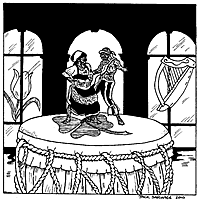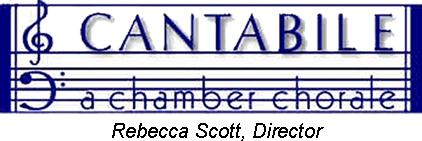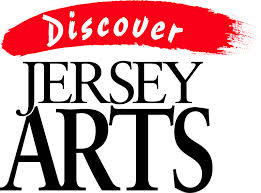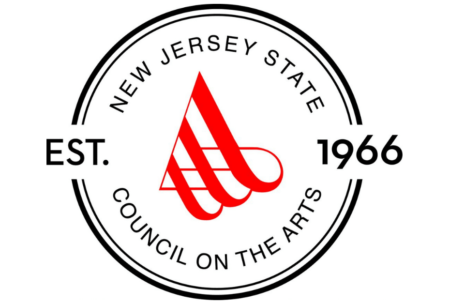Grant funding has been provided by the Middlesex County Board of County Commissioners through a grant award from the Middlesex County Cultural and Arts Trust Fund.
Program Notes: Hope of Spring
Hope of Spring
By Rebecca Scott
April 24, 2010

Hope of Spring
The Cuban Mass by Enrique Ubieta
THE CUBAN MASS, a composed symphonic choral work by Enrique Ubieta, was commissioned in 1968 by Father Michael Feketis, a Roman Catholic priest in New Jersey, and was premiered at the Episcopal Cathedral of St John the Divine in Manhattan in 1973. The orchestral version uses orchestral strings, winds and brass (including wooden charanga flute), harp, piano, and three percussionists playing Cuban timbal, claves, timpani, chimes, bongo, cymbal, and other percussion instruments. The Mass has also been performed by the Westchester Philharmonic, the Bach Choir of Pittsburgh, in Sweden, Norway, and other locations around the world. The original version was performed most recently in 2008 by the Ukiah Symphony Orchestra in Mendocino County, California. Cantabile presents a reduced version for piano and organ and two percussionists, with revised percussion parts provided to us by the composer.
The Mass is sung in Spanish in approved translation, each movement set to a traditional dance rhythm or form.
Kyrie (Señor, ten piedad) – set as a Bembe, an Afro-Cuban feast celebrating a supernatural power through dance.
Gloria (Gloria a Dios en el cielo) – Guajira, a sweet melodic, country song (guajira is “peasant woman”). This is the form of the well-known folk tune “Guantanamera”.
Credo (Creemos en un sólo Dios) – a Son, complex dance in binary rhythm, flourishing in Havana since 1916.
Sanctus and Benedictus (Santo; Bendito el que viene) — Afro, an Afro-Cuban form associated with lullabies and laments as well as prayers, with a variety of vocal effects. “Oricha” is a West African word meaning “Deity.”
Agnus Dei (Cordero del Dios) – Danzón, an instrumental dance dating from the 1870s with recurring rondo section and a characteristic five-note syncopated cinquillo motif.
Alleluya – a final celebratory Conga.
Enrique Ubieta graduated at age 18 from the Municipal Conservatory of Havana. He studied at the Moscow Conservatory under Aram Khachaturian. Returning to Cuba, he developed a new harmonic system called “Bimodalism.” Ubieta became a founding member of the Cuban Institute of Art and Cinematographic Industry and has composed many prize-winning film scores, as well as vocal, chamber, and symphonic works and a comic zarzuela. Resident in the U.S. since 1967, he lives in New York.
In One of the Stars by Emma Lou Deimer
Aviator-poet Antoine de Saint-Exupéry knew the stars as beacons and friends, perhaps as ultimate destination. He left behind a simple fable illustrated with unforgettable sketches of his alter ego, the Little Prince. In One of the Stars was commissioned in 2006 to celebrate the life and in memory of Cantabile alto and board member Leila Eutermarks. These closing passages from The Little Prince were some of Leila’s favorites. The Prince consoles his friend before departing life on this planet for his distant home: “In one of the stars, I will be laughing.” The esteemed American composer, Emma Lou Diemer, has accompanied the somewhat melancholy melodies with piano chords rolling up towards the sky and falling down like stars. The solo guitar accentuates the poignancy of the melodies while dissonant chords punctuate the word “sorrow” like sudden sobs, escaping then dying away when time has healed. “Time” is stretched out with measures of harp-like notes climbing to heaven then falling to temporary resolutions. The final ascending cadence “look at the sky” takes our thoughts back to the heavens. We thank Emma Lou Diemer for a loving setting that keeps the simplicity and wisdom of the fable.
Emma Lou Deimer (born 1927, Kansas City, MO) played the piano and composed at a very early age and became organist in her church at age 13. Her great interest in composing music continued through College High School in Warrensburg, MO, and she majored in composition at the Yale Music School (BM, 1949; MM, 1950) and at the Eastman School of Music (Ph.D, 1960). She studied in Brussels, Belgium on a Fulbright Scholarship and spent two summers of composition study at the Berkshire Music Center. From 1959-61 she was composer-in-residence in the Arlington, VA schools under the Ford Foundation Young Composers Project, and composed many choral and instrumental works for the schools, a number of which are still in publication. She was consultant for the MENC Contemporary Music Project before joining the faculty of the University of Maryland where she taught composition and theory from 1965-70. In 1971 she moved from the East Coast to teach composition and theory at the University of California, Santa Barbara. At UCSB she was instrumental in founding the electronic/computer music program. In 1991 she became Professor Emeritus at UCSB. Through the years she has fulfilled many commissions from schools, churches, and professional organizations. Most of her works are published. She has received countless awards from prestigious institutions, including Yale University, The Eastman School of Music, the National Endowment for the Arts, the Kennedy Center Friedheim Awards, the American Guild of Organists, the American Society of Composers, Authors, and Publishers/ASCAP, the Santa Barbara Symphony. She is an active keyboard performer (piano, organ, harpsichord, synthesizer), and has given concerts of her own music at Washington National Cathedral, St. Mary’s Cathedral and Grace Cathedral in San Francisco, Cathedral of Our Lady of the Angels in Los Angeles, and elsewhere.
Lay a Garland by Robert Lucas Pearsall
Waves of sound, like waves of grief, come and go, in this 8 part a cappella texture, building first from middle register, out like a fan upwards and downwards in pitch, then from the bottom line up, then again from the top line down, like a choppy sea of sorrowful emotion, expressing the poetry. Finally, familiar strong homophonic blocks of sounds express the words, “But she was firm,” followed by lines undulating up and down like shovels of earth being thrown on a coffin. All 8 voices join in the final cadence requesting “lie lightly, thou gentle earth.”
Madrigals – Members of Cantabile enjoy the demands of singing one on a part, with the required blending, ensemble phrasing and rhythmic and dynamic contrast. Madrigals – short, often stophic forms, with mostly homophonic texture and imitative passages – are truly ensemble love songs. They flourished in the early 1500s in both Italy and England. John Dowland and Thomas Morley represent the best of the English madrigal school of the late 16th century. These four pieces show the high art form of this time.
Spring Rhapsody by Ruth Scott Clark
This is the composer’s choral version of her solo song composed as usual to her own poetry during her first year as a school teacher of music, art and English in 1933. The choral version exploits the rapturous nature of the poem by movement of the inner voices, like rip tides below the soaring and diving melody of the high voice – they flow, they punctuate, they harmonize, they imitate, they pull up and down, stretching the melody as in a game of tug-of-war, finally resolving and revealing at the cadence, that this ecstasy of spring, is really about the memory of lost love. All this motion and emotion, demands an intensity in performance, where each singer must listen carefully to other voices and time their breath and pronunciation as if singing in a solo quartet. Mrs. Clark was a consummate pianist with flawless technique, who enjoyed performing chamber music with singers and instrumentalists well into her 90s. She performed the solo version of this song on her last recital with her daughter, Rebecca Scott, in the summer of 2007.
Three well-known Irish songs complete our program. My Gentle Harp (Londonderry Air) is better know in the USA as “O Danny Boy” and is always thought of as an Irish folksong, although there is some proof that it was composed by an Englishman. Alice Parker wrote arrangements with the famous choral conductor Robert Shaw for many years. Mairi’s Wedding, an Irish Reel (2/4 time), gained popularity in a 20th century Irish movie. Our own arrangement in Irish country style with flutes, recorders and Bodhran (Irish drum), precedes that of Bob Chilcott’s. An Irish jig – The Kerry Dance – (6/8 time) is a must to finish off the night in a burst of positive energy!


